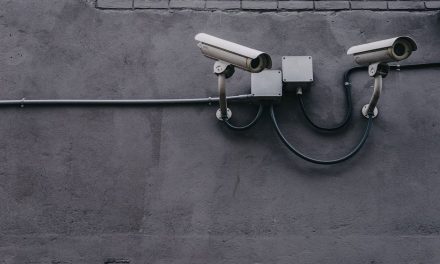Table of Contents
“The Evolution of Remote Leadership: Unveiling the Future of Leading from Afar in 2023”
Introduction
“The Evolution of Remote Leadership: What to Expect in 2023” explores the anticipated changes and advancements in the field of remote leadership. As technology continues to advance and the world becomes increasingly interconnected, remote work has become more prevalent than ever before. This article delves into the potential trends and developments that leaders can expect to encounter in the year 2023, shedding light on the evolving landscape of remote leadership and its impact on organizations and teams.
The Impact of Technology on Remote Leadership in 2023

The Impact of Technology on Remote Leadership in 2023
In recent years, remote work has become increasingly popular, and with the advancements in technology, it is expected to continue to grow in the coming years. As a result, remote leadership has also evolved to adapt to this changing landscape. In 2023, we can expect to see several key trends and developments that will shape the future of remote leadership.
One of the most significant impacts of technology on remote leadership is the ability to communicate and collaborate effectively. With the rise of video conferencing platforms and project management tools, leaders can now connect with their teams in real-time, regardless of their physical location. This has made it easier for leaders to provide guidance, offer feedback, and foster a sense of teamwork among remote employees.
Furthermore, technology has also enabled leaders to track and measure the performance of their remote teams more accurately. With the help of productivity and time-tracking software, leaders can monitor the progress of projects, identify bottlenecks, and ensure that everyone is working towards the same goals. This data-driven approach allows leaders to make informed decisions and optimize their team’s performance.
Another significant impact of technology on remote leadership is the rise of artificial intelligence (AI) and automation. AI-powered tools can now handle repetitive and mundane tasks, freeing up leaders to focus on more strategic and creative aspects of their role. This not only increases efficiency but also allows leaders to provide more value to their teams by focusing on high-level decision-making and problem-solving.
Moreover, AI can also assist leaders in making data-driven decisions. By analyzing large amounts of data, AI algorithms can identify patterns and trends that humans may overlook. This can help leaders identify areas for improvement, predict future challenges, and make more informed decisions that benefit their remote teams.
In addition to communication and AI, technology has also revolutionized the way leaders provide support and mentorship to their remote employees. With the help of virtual reality (VR) and augmented reality (AR), leaders can now create immersive and interactive training experiences for their teams. This allows remote employees to learn new skills, receive feedback, and engage in virtual simulations that mimic real-world scenarios.
Furthermore, technology has also made it easier for leaders to foster a sense of community and belonging among remote teams. With the rise of social networking platforms and online collaboration tools, leaders can create virtual spaces where employees can connect, share ideas, and build relationships. This not only enhances teamwork but also helps remote employees feel more connected to their organization and its mission.
In conclusion, the impact of technology on remote leadership in 2023 is significant and far-reaching. From improved communication and collaboration to the rise of AI and automation, technology has transformed the way leaders lead their remote teams. By embracing these advancements, leaders can leverage technology to enhance productivity, foster innovation, and create a sense of community among their remote employees. As technology continues to evolve, it is crucial for leaders to stay informed and adapt their leadership strategies to meet the changing needs of remote work.
Strategies for Effective Communication in Remote Leadership
The COVID-19 pandemic has accelerated the shift towards remote work, forcing leaders to adapt to a new way of managing their teams. As we look ahead to 2023, it is clear that remote leadership will continue to evolve, with new strategies for effective communication emerging.
One of the key challenges of remote leadership is maintaining effective communication with team members who are physically dispersed. In 2023, leaders will need to leverage technology to bridge this gap. Video conferencing platforms will become even more sophisticated, allowing for more interactive and engaging virtual meetings. Leaders will be able to use features such as breakout rooms and virtual whiteboards to facilitate collaboration and brainstorming sessions.
In addition to video conferencing, leaders will also need to embrace other communication tools to stay connected with their teams. Instant messaging platforms will become more integrated with project management software, allowing for seamless communication and task coordination. Leaders will need to encourage their team members to use these tools effectively, setting clear expectations for response times and availability.
Another important aspect of effective communication in remote leadership is the ability to provide feedback and recognition. In 2023, leaders will need to find new ways to provide timely and meaningful feedback to their team members. This could include using screen recording software to provide visual feedback on specific tasks or projects. Leaders will also need to be proactive in recognizing and celebrating the achievements of their team members, even when they are not physically present.
Building trust and fostering a sense of community will also be crucial for remote leaders in 2023. Without the opportunity for face-to-face interactions, leaders will need to find creative ways to build relationships with their team members. Virtual team-building activities and social events will become more common, helping to foster a sense of camaraderie and connection. Leaders will also need to be intentional about creating opportunities for informal conversations and check-ins, as these informal interactions can help to build trust and strengthen relationships.
Finally, remote leaders in 2023 will need to prioritize their own well-being and self-care. The boundaries between work and personal life can easily blur when working remotely, and leaders must set a positive example by taking care of themselves. This could include setting clear boundaries around work hours, taking regular breaks, and finding ways to disconnect from work when needed. By prioritizing their own well-being, leaders can better support their teams and model healthy work habits.
In conclusion, the evolution of remote leadership in 2023 will require leaders to adopt new strategies for effective communication. Leveraging technology, providing feedback and recognition, building trust and fostering a sense of community, and prioritizing well-being will be key to successful remote leadership. As the remote work landscape continues to evolve, leaders must be adaptable and open to new approaches in order to effectively lead their teams in a virtual environment.
Adapting to Changing Workforce Dynamics in Remote Leadership
The COVID-19 pandemic has brought about a significant shift in the way we work. With the rise of remote work, leaders have had to adapt to managing their teams from a distance. As we look ahead to 2023, it is clear that remote leadership will continue to evolve to meet the changing workforce dynamics.
One of the key aspects of remote leadership in 2023 will be the ability to effectively communicate and collaborate with team members who are spread across different locations. Leaders will need to leverage technology to bridge the gap and ensure that everyone feels connected and engaged. Video conferencing tools, project management software, and instant messaging platforms will become even more essential in facilitating communication and collaboration.
In addition to technology, leaders will also need to focus on building strong relationships with their remote team members. This means taking the time to get to know each individual, understanding their strengths and weaknesses, and providing the necessary support and guidance. Building trust will be crucial in remote leadership, as team members need to feel confident in their leader’s ability to guide them and make decisions.
Another important aspect of remote leadership in 2023 will be the ability to foster a sense of belonging and inclusion within the team. With team members working from different locations, it can be easy for individuals to feel isolated or left out. Leaders will need to be proactive in creating opportunities for team bonding and fostering a sense of community. This could include virtual team-building activities, regular check-ins, and creating spaces for informal conversations.
As remote work becomes more prevalent, leaders will also need to focus on managing work-life balance for their team members. Without the physical separation between work and home, it can be challenging for individuals to disconnect and recharge. Leaders will need to set clear expectations around working hours and encourage their team members to take breaks and prioritize self-care. This will not only benefit the well-being of the team members but also contribute to their overall productivity and engagement.
Furthermore, remote leadership in 2023 will require leaders to be adaptable and flexible. The nature of remote work means that unexpected challenges can arise, such as technical issues or personal emergencies. Leaders will need to be prepared to handle these situations with grace and find creative solutions to keep the team on track. This may involve adjusting deadlines, redistributing tasks, or providing additional support.
In conclusion, remote leadership in 2023 will continue to evolve to meet the changing workforce dynamics. Effective communication and collaboration, building strong relationships, fostering a sense of belonging, managing work-life balance, and being adaptable and flexible will be key skills for leaders to master. By embracing these aspects of remote leadership, leaders can ensure that their teams thrive in the remote work environment and achieve their goals.
The Role of Emotional Intelligence in Remote Leadership
The role of emotional intelligence in remote leadership is becoming increasingly important as more and more companies embrace remote work. In 2023, we can expect to see a continued emphasis on emotional intelligence as a key skill for remote leaders.
Emotional intelligence, often referred to as EQ, is the ability to recognize, understand, and manage our own emotions, as well as the emotions of others. It involves being aware of our own feelings and how they impact our behavior, as well as being able to empathize with and understand the emotions of those around us.
In a remote work environment, where face-to-face interactions are limited, emotional intelligence becomes even more crucial. Remote leaders need to be able to effectively communicate and connect with their team members, despite the physical distance. This requires a high level of emotional intelligence.
One aspect of emotional intelligence that is particularly important in remote leadership is self-awareness. Remote leaders need to be aware of their own emotions and how they may be influencing their behavior and decision-making. They need to be able to regulate their emotions and respond appropriately in different situations.
Another important aspect of emotional intelligence in remote leadership is empathy. Remote leaders need to be able to understand and empathize with the emotions and experiences of their team members. This can help to build trust and rapport, and create a sense of belonging and connection within the team.
Effective communication is also a key component of emotional intelligence in remote leadership. Remote leaders need to be able to communicate clearly and effectively, using both verbal and non-verbal cues. They need to be able to listen actively and respond empathetically to their team members’ needs and concerns.
In addition to these skills, remote leaders also need to be able to manage conflict and resolve issues remotely. This requires a high level of emotional intelligence, as they need to be able to navigate difficult conversations and find solutions that are mutually beneficial for all parties involved.
As remote work continues to evolve, so too will the role of emotional intelligence in remote leadership. In 2023, we can expect to see a greater emphasis on training and development in this area. Companies will recognize the importance of emotional intelligence in remote leadership and invest in programs and resources to help their leaders develop these skills.
Furthermore, technology will continue to play a role in supporting emotional intelligence in remote leadership. Tools and platforms that facilitate communication and collaboration will become more sophisticated, allowing remote leaders to connect with their team members in more meaningful ways. Virtual reality and augmented reality may also be used to create more immersive and engaging remote work experiences.
In conclusion, the role of emotional intelligence in remote leadership is crucial and will continue to be so in 2023. Remote leaders need to be self-aware, empathetic, and effective communicators in order to successfully lead their teams from a distance. As remote work becomes more prevalent, companies will recognize the importance of emotional intelligence and invest in developing these skills in their leaders. With the right training and support, remote leaders can thrive and create a positive and productive remote work environment.
Q&A
1. What is “The Evolution of Remote Leadership: What to Expect in 2023”?
“The Evolution of Remote Leadership: What to Expect in 2023” is a publication or article that discusses the anticipated changes and developments in remote leadership practices by the year 2023.
2. What are some key points or trends discussed in “The Evolution of Remote Leadership: What to Expect in 2023”?
Some key points or trends discussed in “The Evolution of Remote Leadership: What to Expect in 2023” may include the increased use of advanced technology for remote collaboration, the importance of strong communication skills for remote leaders, the rise of flexible work arrangements, and the need for effective virtual team management strategies.
3. Who is the target audience for “The Evolution of Remote Leadership: What to Expect in 2023”?
The target audience for “The Evolution of Remote Leadership: What to Expect in 2023” may include current and aspiring remote leaders, managers, HR professionals, and individuals interested in understanding the future of remote work dynamics.
4. Where can one find “The Evolution of Remote Leadership: What to Expect in 2023”?
“The Evolution of Remote Leadership: What to Expect in 2023” may be found in various sources such as online publications, industry websites, business journals, or through specific research or consulting firms specializing in remote work and leadership.
Conclusion
In conclusion, the evolution of remote leadership is expected to continue in 2023. With advancements in technology and changing work dynamics, leaders will need to adapt to new ways of managing remote teams. This may include leveraging artificial intelligence, virtual reality, and other tools to enhance communication and collaboration. Additionally, leaders will need to prioritize employee well-being and engagement to ensure the success of remote work arrangements. Overall, the future of remote leadership will require flexibility, innovation, and a deep understanding of the unique challenges and opportunities that come with leading remote teams.





Recent Comments